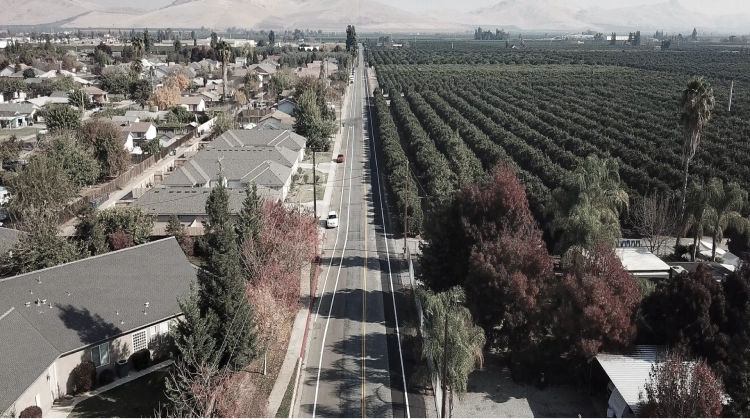
Civil Engineering Firm QK Gets from Dirt to Data to Decision Faster
With Egnyte, QK solved a vexing puzzle: How do we manage a surge in remote work without resorting to workarounds that hurt more than they help?
QK’s Egnyte Story, by the Numbers:
- 8 terabytes of data centralized in the cloud
- 40% work speed increase compared to prior solution
- Estimated thousands of hours saved on data migration
- GIS project times reduced from hours to minutes

From connecting its remote workers to managing transaction-heavy CAD files smoothly and quickly, the engineering firm QK had major logistical gaps to fill just to be able to do its work. Even after a large-scale server migration that first tried to leverage Panzura, then Azure Files, the company suffered from poor cross office and remote collaborative experiences that kept civil engineers mired in workarounds and slowed its projects.
QK realized it would take a fully cloud-hosted solution to facilitate smooth file management and move projects forward. Egnyte was that solution.
Challenge: Foster Engineering Work Without Excessive Workarounds
Kristoffer Law, IT Administrator at QK, recalls the file management paradigm at the company when he started there: “We had independent file servers siloed in each of our offices, which made cross-office work nearly impossible.” To address this, the firm relocated each server to its central office, creating a unified data repository that its handful of remote staff could access via VPN.
But with one issue solved, another emerged: QK works largely with CAD files that include countless XREFS, any of which could be subject to multiple edits and access requests at any time. This added up to major bandwidth demands that the system had trouble satisfying. “CAD files are so transaction-heavy, which created a huge slowdown, and solutions were hard to find,” explains Law. “Vendors like Riverbed didn’t work well with GIS, which is a huge part of what we do, and virtual desktop interfaces caused a lot of latency.”
Then came Covid. Although the team’s data was newly centralized in QK’s Visalia office, the civil engineers working with that data were suddenly dispersed across the region. Demand for remote access skyrocketed, and VPN connectivity proved unsustainable at such a large scale. “We had started using Panzura, which was good at handling our CAD transactions, but not at facilitating direct file access for remote staff,” says Law. “Engineers had to use VPNs, which were so prone to crashing and latency that folks often downloaded files and worked on them locally. That, in turn, created huge version control issues.”
With a makeshift infrastructure consisting of software vendors, VPN connections, virtual desktop interfaces, and locally-stored design applications, the team found themselves spending nearly as much time managing their technology as advancing their projects. They knew something would need to change.

Solution: Egnyte Reduces Complexity for a Frustrated Team
Law discovered Egnyte after an external collaborator on a GIS project sent him a link to a file via Egnyte’s secure link sharing functionality. “It was everything we needed,” says Law. “With Egnyte, everything is stored in the cloud, so civil engineers can access and manage files directly anywhere with an internet connection.”
Law points to several specific ways in which Egnyte facilitated both large-scale remote file access and collaboration on large CAD files:
- Faster performance
Frequent XREF transactions, which come with the territory for CAD-intensive firms like QK, were highly taxing on local servers, VDIs, and other systems the company had tried. But with Egnyte, Law says, “All of that computing demand shifts to the cloud, and with Egnyte’s Desktop app, things are fast and smooth regardless of file size.”
- Eliminating geographic limitations
Any changes made to a file sync to Egnyte’s cloud environment immediately, ensuring nobody is working on an outdated version of that file. “With Egnyte’s PDF editor, our construction management folks can go out to a site and work on mobile devices without later having to manually copy their changes from the device into a file server. Instead, those changes sync automatically, which is not just convenient, but eliminates the risk of losing content in transition,” Law explains. “We don’t even need a constant internet connection. For instance, we have GIS technicians working in areas with unreliable internet. With Egnyte, they can work on GIS files offline, and their updates sync as soon as they get a connection. It’s totally smooth, even with heavy GIS content like parcel data in San Bernardino County, which is just massive.”
- File locking
QK is a heavy Civil 3D user, with multiple people often working in the same Civil 3D file simultaneously. Previously, when more than two or three people were working on a file at the same time, synchronization conflicts would arise, with stakeholders overwriting each other’s changes. But with Egnyte, Law says, “we have a single file repository that locks, so if one person is in a file, another person can’t get in until the first person finishes. That prevents the overwrites and synchronization problems we were dealing with.”
Benefits: Long Distances Feel Short, Large Files Feel Small
To date, QK has migrated roughly 8 terabytes of project data into Egnyte, spanning disciplines from CAD to GIS and beyond. The team is now working faster and more efficiently, regardless of where stakeholders are located or the size and complexity of the files they’re working on.
“Right before Egnyte, we were using Azure Storage with a VPN connection to manage our workflows,” Law says. “Since switching to Egnyte, our CAD folks are working about 40% faster. In other transaction-heavy areas like GIS, we had one user who used to take over an hour to do some work on a geoprocessing tool––with Egnyte, it now takes two minutes.”
Law speaks to other ways Egnyte has outperformed other solutions. “Basically, if you look at a Venn Diagram of Egnyte and the other systems we tried, Egnyte is basically a circle encompassing those other systems while also including tons of other great features. I love Egnyte’s auditing and cybersecurity features, which we couldn’t get elsewhere unless we paid an exorbitant additional cost. Looking ahead, we’re exploring integrations between Egnyte and other platforms like Autodesk and Procore, and Microsoft co-editing.”
The impact of Egnyte has rippled across QK’s organization and partner ecosystem and come back to Law through glowing feedback from everyone who has interacted with the platform. “Once we moved to Egnyte, our civil engineers breathed a huge collective sigh of relief,” Law explains. “People are thrilled not to have to operate over VPN or deal with bottlenecks anymore. They’ve reported considerable improvements in speed. We’ve also been able to handle staff moving to remote regions with slow internet connections by instructing them to use Egnyte’s Offline Sync function for large project files. I’ve even talked to one of our MSP partners who has seen how much we’ve benefited from Egnyte and now they want to sell it to their other clients.”
Of all the systems with which QK has tried to address its challenges in recent years, only Egnyte has acted more as a help than a hindrance, empowering the firm to adapt to the remote-first norms of the post-Covid era without sacrificing speed or performance. Whatever changes the future may bring, Law is confident he can count on Egnyte: “For Egnyte to stop working, the internet would somehow have to vanish out of existence. Short of that, I know it’s there for us.”

At a Glance
Industry
Engineering and Construction
Location (HQ)
Central California
Total Employees
225
Learn More




